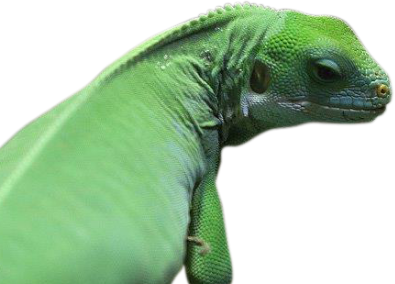Red Panda
KEY FACTS
-
LATIN NAMEAilurus fulgens
-
BIOMETemperate Forests
-
CLASSMammal
-
ORDERCarnivores
-
CONSERVATION STATUSEndangered
COME AND FIND ME AT..
The Asian Sanctuary

About the Red Panda
The only species of its kind in the world, it is often referred to as the Firefox or Lesser Panda. Red Pandas typically grow to the size of a house cat, though their large, bushy tails can add an additional 18 inches to their overall body length. Red pandas can weigh between 3-6kg.
They have long, soft reddish-brown fur with black and white markings as well as piercing black eyes, and the female is slightly smaller than the male. There are two known sub-species of the Red Panda – one (Ailurus fulgens fulgens) is found in Nepal, India and parts of China, while the other (Ailurus fulgens styani) lives solely in China. The Red Pandas in Fota belong to the Nepalese/ Indian sub-species
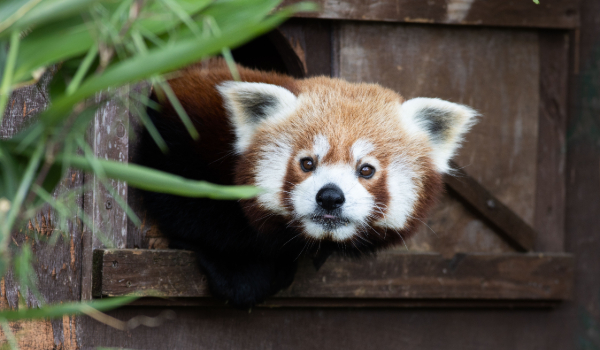
Habitat
The Red Panda can be found in the high-altitude temperate forests of the Himalayas, stretching from western Nepal to China. A skilful and acrobatic animal that lives predominantly in trees, the Red Panda has sharp claws to help it grip onto bark while its bushy tail acts as a balancing aid and also provides warmth. It lives in territories, frequently alone and rarely in pairs or family groups.
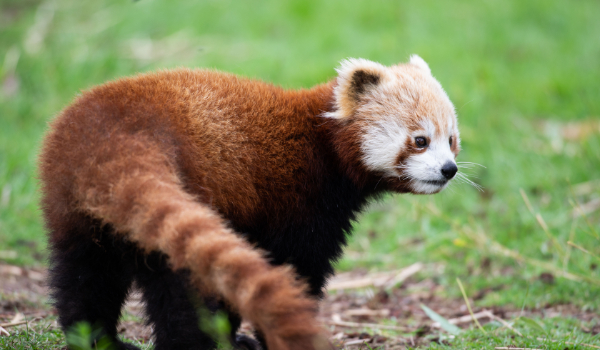
Wild Notes
Even though it belongs to the Carnivora order, the Red Panda is predominantly herbivorous with a preference for the tender shoots of bamboo leaves . Its diet is supplemented by fruit, insects, and small animals, especially in warmer seasons.
After a gestation period of 112 to 158 days, the female gives birth to between 1-4-blind cubs. This usually occurs between the end of May and the beginning of July. A few days prior to giving birth, the female will start to collect nesting materials and generally locates her nest in a secure tree hollow or a rock column.
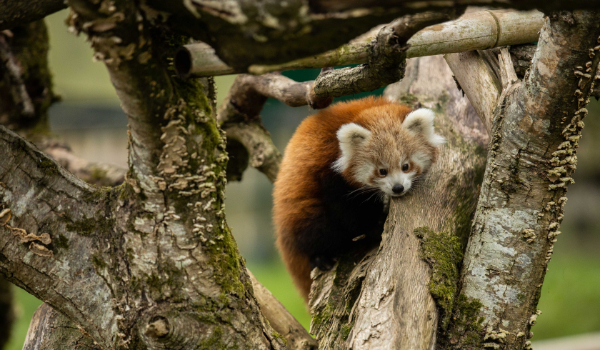
Conservation
Classified as Endangered, it is thought that there may be as few as 2,500 mature individuals remaining in the wild. Recent estimates suggest that there’s been a 50% decrease in numbers over the last 20 years alone. Threats to their survival vary according to different regions but include habitat destruction & fragmentation, hunting, and competition from domestic livestock. Livestock herders use dogs to deter predators- these dogs can kill red pandas as well as transmit contagious diseases such as canine distemper which is fatal to red pandas.
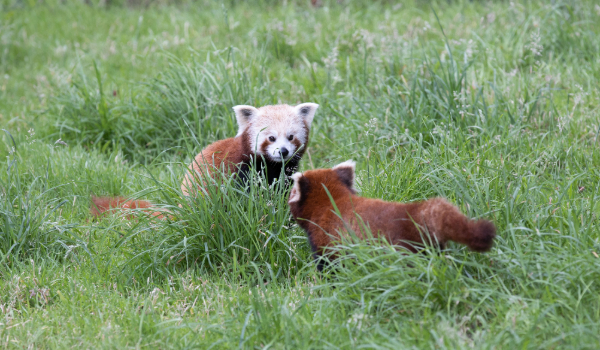
Did You Know?
According to DNA tests, the Red Panda is actually a closer relative of the Racoon than the Giant Panda and has a thumb pad on each of its paws. The Panda uses this while eating – pressing it against another pad on its palm in order to hold and manipulate the bamboo.
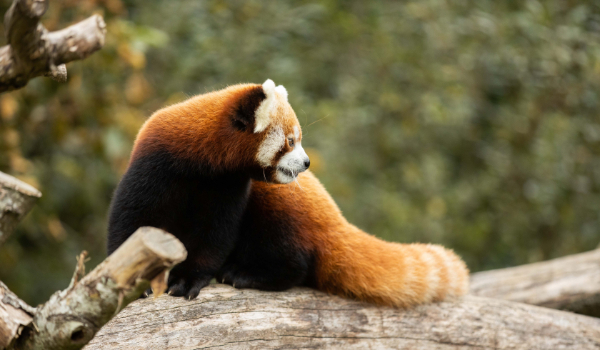
The Fota Connection.
Fota Wildlife Park feeds its Red Pandas a staple diet of bamboo which is grown in a variety of locations within the park. Bamboo’s popularity as an ornamental plant species increased during Victorian times and is present in a number of historical estates throughout Ireland including Fota House and arboretum.






